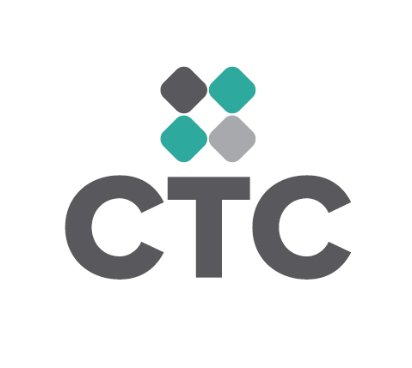
Cosmetic Skin Procedures
At CTC, we understand the importance of feeling confident in your own skin. Our dedicated team of skincare experts is committed to providing you with top-notch services to address a range of cosmetic concerns.
Whether you’re dealing with moles, keloids, cysts, warts, painful pimples, skin tags, keratosis, nodules, or lipomas, we have tailored solutions to help you achieve the flawless complexion you desire.
For more information on these conditions and the procedures we perform click here
Go with confidence
Don’t think you can afford it? Think again.
We provide care for all types of skin conditions and concerns.
Contact our team of expert physicians
for an assessment today!
“Dr. Bienenstock was great! He was extremely knowledgeable, friendly, helpful and patient. He gave me effective guidance regarding my skin disorder and provided different recommendations so I could make an informed choice. You can certainly tell he is a medical expert and cares alot about his work.”
“I can’t believe how easy and painless it was. It costs much less than I was expecting. I should have done this a long time ago.”
Conditions and Procedures
-

Moles
Occur when cells in the skin grow in a cluster instead of being spread throughout the skin. These cells are called melanocytes, and they make the pigment that gives skin its natural color. Moles may darken after exposure to the sun, during the teen years, and during pregnancy.
Procedure options
Complete removal by surgical excision with suturing of the surrounding normal skin together
Debulking (removing a portion, but not all of it)
-

Skin Tags
A skin tag is a small, soft, flesh-colored skin growth that is usually benign (not cancer). They are among the most common bumps on adult skin. Skin tags are harmless but can be an annoying, itchy problem that interferes with clothing, jewelry. They tend to occur on the eyelids, neck, armpits, groin folds, under the breasts or elsewhere.
Procedure options
Freezing using very cold liquid (cryotherapy)
Sharp blade excision
-

Keratosis
One of the most common non-cancerous growths on the skin, keratosis appears as a brown, black, or light tan growth found on the back, shoulders, face, or chest. It may also appear scaly or waxy, and at times, slightly elevated. It is important for a medical provider to assess keratoses because they may look similar to moles with the potential for being skin cancer.
Procedure options
Shave excision
Chemical or heat cautery
Freezing using very cold liquid (cryotherapy)
Curettage, or scraping the surface of the skin with a specialized instrument
-

Lipoma
A growth made of fat tissue. They are generally soft to the touch, movable, and painless. They usually occur just under the skin, but occasionally may be deeper. Lipomas are generally not cancerous but sometimes are cancerous. It is important for a qualified professional to examine lipomas to ensure your safety.
Procedure options
Complete removal by surgical excision with repair of the overlying skin
-

Cyst
These non-cancerous, closed pockets of tissue are usually filled with build-ups of pus, fluid, or other materials. They can appear virtually anywhere on the surface of the skin, developing due to infections, clogged oil glands, or foreign bodies, such as body piercings.
Procedure options
Complete removal by surgical excision with repair of the overlying skin using sutures
Drainage by needle aspiration
-

Growth
Growths may be raised or flat and range in color from dark brown or black to skin-colored to red. They may be present at birth or develop later. When the growth is controlled and the cells do not spread to other parts of the body, the skin growth (tumor) is noncancerous (benign). The doctor can make an accurate diagnosis during your visit.
Procedure options
Consult with the doctor to determine your best option
-

Nodule
A category of skin growths, Nodules can develop just below the skin. They can also develop in deeper skin tissues or internal organs. People can mistake other conditions for nodules, such as small cysts, boils, and abscesses. There are many types of nodules so it important that they are examined to ensure non-cancerous
Procedure options
Complete removal by surgical excision with repair of the overlying skin using sutures
Oral antibiotics, if needed
Drainage via needle aspiration
-

Wart
A small growth with a rough texture that can appear anywhere on the body, common body parts include the hands, feet and genitals. They appear as a solid blister or a small cauliflower. Warts are caused by viruses in the human papillomavirus (HPV) family. Warts can spread to other areas of the skin but this can be prevented with treatment. Some wart treatments are free with valid OHIP coverage.
Procedure options
Prescription cream, applied regularly over several months
Freezing using very cold liquid (cryotherapy)
Shave excision
Punch biopsy excision
-

Painful Pimple
Pimples develop on the surface of the skin due to inflammation in the pores. The pore becomes inflamed as a result of bacteria, oil, and dead skin cells building up. To combat this, the body releases white blood cells, and the resulting inflammation creates a pimple. Pimples become painful when they occur in pores close to a nerve.
Procedure options
Acne Extraction: Sterile instruments to remove them
Incision and Drainage: Involves a sterile needle and surgical blade to perform a small incision to open the blemish and drain the build up
Steroid injection: A medication that can be injected to reduce risk of scarring and speed up healing
-

Cherry Spot
Red moles, or cherry angiomas, are common skin growths that can develop on most areas of your body. The collection of small blood vessels inside a cherry angioma give them a reddish appearance.
Procedure options
Surgical removal of the spot and skin underneath with repair by suturing the surrounding normal skin together
Freezing using very cold liquid (cryotherapy)
Chemical cautery of the spot
-

Earlobe Rejuvenation, Piercing and Gauge Repair
Earlobes can become damaged, misshapen over time with aging, heavy earrings, multiple piercings, or injury. Some earring styles “space” the earlobe edges apart and leave a wide gap. The long-term appearance can be unpleasant, and earrings can sag too low.

